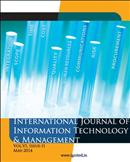An Analysis of Parameters of Cable Tv In Digitization Network In Area of Broadcasting An in-depth analysis of cable TV parameters in the era of digitization
Main Article Content
Authors
Abstract
This paper is a survey of the transmissiontechniques used in digital television (TV) standards worldwide. With theincrease in the demand for High-Definition (HD) TV, video on-demand and mobileTV services, there was a real need for more bandwidth-efficient, flawless andcrisp video quality, which motivated the migration from analogue to digitalbroadcasting. In this paper we present a brief history of the development of TVand then we survey the transmission technology used in different digitalterrestrial, satellite, cable and mobile TV standards in different parts of theworld. First, we present the Digital Video Broadcasting standards developed inEurope for terrestrial (DVB-T/T2), for satellite (DVB-S/S2), for cable (DVB-C)and for hand-held transmission (DVB-H).We then describe the Advanced TelevisionSystem Committee standards developed in the USA both for terrestrial (ATSC) andfor hand-held transmission (ATSC-M/H). We continue by describing the IntegratedServices Digital Broadcasting standards developed in Japan for Terrestrial(ISDB-T) and Satellite (ISDB-S) transmission and then present the InternationalSystem for Digital Television (ISDTV), which was developed in Brazil byadopteding the ISDB-T physical layer architecture. Following the ISDTV, wedescribe the Digital Terrestrial television Multimedia Broadcast (DTMB)standard developed in China. Finally, as a design example, we highlight thephysical layer implementation of the DVB-T2 standard. Digitization of cable television in India is animportant and necessary step for regulating cable television sector in Indiaand to bring transparency in the system to benefit all stakeholders, includingconsumers and cable operators. The Cable Television Networks (Regulation)Amendment Bill, 2011 mandated that all Cable companies should convert theiranalogue systems to digital in four metros by 31 March 2012 and whole countryshould go digital by 31 December 2014. The Act also requires the cableoperators to submit reports on the total number of subscribers, subscriptionrates, and the number of subscribers for free-to-air and pay channels.
Downloads
Download data is not yet available.
Article Details
Section
Articles

